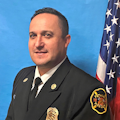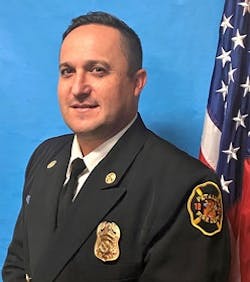Aligning Your Generals: The Importance of Both Sides of the Radio
During my 22 years in the fire service, I spent eight years as a part-time Fire and EMS dispatcher. Those eight years provided me with some incredible opportunities to improve my knowledge and skills as it pertains to command presence and overall abilities as an incident commander.
I am a firm believer that all dispatchers and fire officers need to have a basic understanding of both sides of the radio. The more a fire officer understands the dispatcher’s job, the better they will be at running an incident or responding to calls. The same rings true for the dispatcher, who needs to understand the field and what happens on-scene at the incident.
Aligning these two generals of an incident will allow for smooth communications and understanding of needs and what will happen next. Having these two important components aligned will have a direct effect on the incident and ultimately will contribute to the success or failure of the incident. Organizations must embrace and include entry-level training opportunities for both dispatchers and fire officers.
Background
As a part -time dispatcher, I was trained in all aspects of the dispatcher job, from certification in Emergency Medical & Fire Dispatch and answering 9-1-1 calls to the advanced use of the radio systems which relayed information to the field units. I'll start this off by saying that the dispatcher job is nowhere near what I thought it was. I had a basic understanding, but the intense training and expectations taxed my capabilities.
Answering horrid 9-1-1 calls and speaking to people experiencing their worst moments is something for which you can’t prepare. Although I had been a firefighter for years, not being there to help physically was something that I don’t think I ever got used to. Having to stay the course on questions while typing information and speaking to people on the phone and radio was the toughest task I have ever encountered.
Staying calm and collected was the easy part given that was a skill I learned from my field experience. The immense challenge was to actively communicate to the caller and your fellow dispatchers while typing, speaking to the caller and giving information to the responding units.
A dispatcher perspective
Having these experiences in the dispatch center immediately changed who I was as a fire officer and incident commander. The understanding of what happened in that center allowed me to improve my fire service abilities.
I found myself waiting to speak on the radio because I could hear sounds over the radio that clued me in to how busy the center was. I could identify when a dispatcher was on the phone and trying to multitask. I discontinued asking questions that really weren’t important or questions that I now recognized as questions that weren’t appropriate for the dispatcher.
I also found that my knowledge of Mobile Data Computers improved, and I had a better understanding of what information could be found in the call mask. In truth, it not only improved my radio skills, but it also improved the outcome of the calls I ran. This was due to my newly honed ability to give the dispatcher a chance to do their job efficiently without stumbling into their way.
Prior to being a dispatcher, I had the attitude that the call I was running was the most important thing. This ignorance rapidly dissipated when I was on the other end of the radio trying to juggle multiple calls and prioritize information. Just having that additional perspective immensely improved my alignment with the other side of the radio.
Utilizing field experience as a dispatcher
As a dispatcher, I felt I had an upper hand with my progression and aptitude. As stated earlier, it was a steep learning curve, but having a good understanding of the field made me a better dispatcher. I understood who needed what information and didn’t fill the radio air with non-important information when units needed a clear radio channel to give a size-up. I understood the benchmarks of time, like turnout time and response times.
Understanding these times would allow me to give units a few seconds before I would hail them on the radio. These few seconds are what the firefighters need to put on their gear and get ready to receive information. Understanding the field allowed me to prioritize information and emergency calls.
It would also allow me to control the channel when I knew important information was coming such as a report on conditions. Having an understanding of the geographical area and an understanding of the response capabilities of the responding agencies allowed me to make educated decisions if a field officer wasn’t immediately available.
I was able to analyze the computer-aided data and override it when I knew it wasn’t correct. A dispatcher that just pushes buttons blindly will eventually cause confusion and inadvertently create setbacks on the incident. CAD is an amazing tool and it is essential for our world, but it will never replace real-life knowledge as a computer can only have so many inputs and outputs.
A computer can lack the common sense that is instilled into a dispatcher by spending time in the field and learning the other side of the radio. When dispatching, I felt like I was one step ahead and could prompt field units or give them information about higher priority calls and others calls within their response area. It's also important to remember that many dispatchers want to improve and support the field, so doing a quick follow up with your dispatcher will help create open communications as well as provide an opportunity to learn on both sides.
Training and organizational commitment
All these traits are important for fire and EMS dispatchers, but unless the dispatcher or the dispatch center embraces these traits and infuses this field training into their training program, it's hard for a civilian dispatcher to truly understand the field. A dispatch center that either has field experience in the center or one that embraces this field training will allow for a well-rounded center full of employees that are successful and contribute tremendously to the incident.
Continual training should be a priority as many things change in the field and within the center. At a minimum, there should be refresher training once a year to address any updates or changes. The dispatcher role is vital to the outcome of incidents and is just as important as the first responders themselves.
The same is true for our fire officers. Within your departments, training programs should include some level of dispatch training. Company officers need to spend some time in dispatch or at a minimum receive dispatch training. Understanding the opposite general's plan and procedures will help guide your company officers to success. They will learn to be patient and ask necessary questions that a dispatcher can answer. They will understand the process and time it takes for the dispatcher to ascertain the answers and deliver them back across the MDC or radio. Officers will have a better understanding of the information on the MDC and how to quickly find it so they can make immediate decisions on the incident they are responding to.
The alignment
A basic understanding of the other side of the radio is a key part to the knowledge, skills and abilities of the company officer and the dispatcher. It will pave the path for a smooth incident where both sides are one step ahead and actions happen instantly and flawlessly.
Both sides of the radio need to have patience and remember there are human beings on those sides. During an active incident is not the time to be walking all over each other and having to wait to transmit vital emergency information. When both sides understand each other’s role in an operation, the incident will be set up for success and both sides will be able to carry out their role successfully.
Continuous yearly refreshers will keep us up-to-speed on the changes within the dispatch center and the field, and will ultimately keep emergency response generals aligned.
About the Author

Chad Costa
Chad Costa is the assistant chief for the Petaluma, CA, Fire Department. With more than 26 years of fire service experience, he has worked in various organizations, including CAL FIRE, rural and semi-rural districts, and a city. As a battalion chief, Costa was the technology and communications battalion chief. He is now a rostered operations branch director for CalFire Team 1 and an alternate operations section chief trainee on California Interagency Team 5. Costa is an accredited Chief Fire Officer through the Center for Public Safety Excellence and has a bachelor’s degree in emergency services management, a master’s degree in fire service leadership, and a certificate in homeland security. Costa has also completed the Executive Chief Officer Program at the National Fire Academy. Costa is a member of the Firehouse Editorial Advisory Board.
